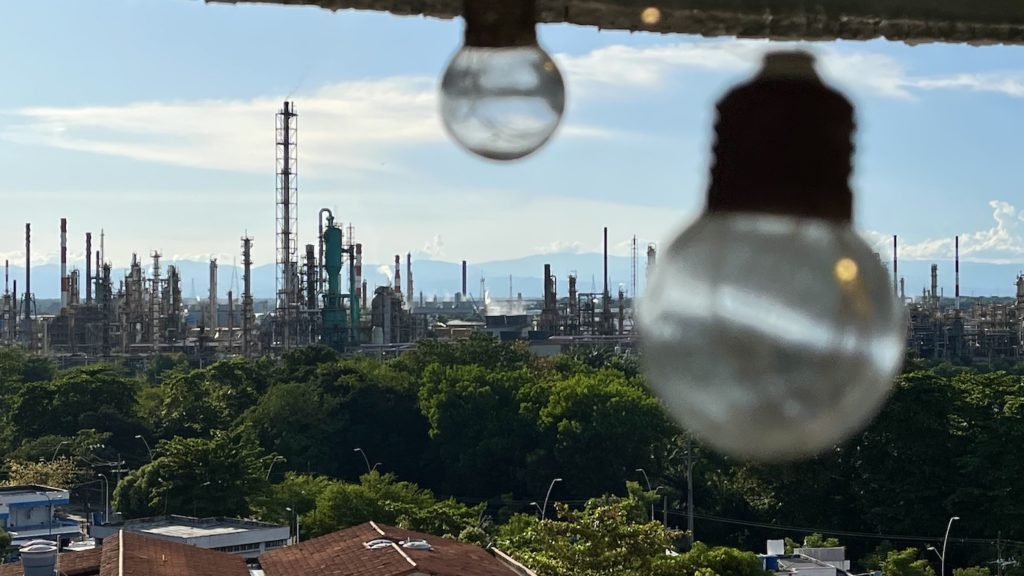
Colombia is intensifying its search for natural gas supplies as the country faces a looming energy crisis. Over the last decade, Colombia’s exploitable natural gas reserves have dwindled, falling from 5,727 billion cubic feet in 2012 to approximately 2,800, marking a persistent trend that could lead to a production deficit by 2028, or sooner, according to pessimistic forecasts. This situation has been exacerbated by the El Niño climatic phenomenon, which severely impacts the country’s hydroelectricity generation capabilities.
To mitigate this situation, Colombia is increasingly forced to rely on natural gas, which now accounts for as much as 26 percent of the electricity generated in the country, according to Luz Stella Murgas, president of the Colombian Natural Gas Industry Association, Naturgas. In response to this critical situation, Colombia has been actively exploring new options to meet its natural gas needs, whether through domestic production or imports.
Colombia’s local options for gas supplies
Andres Camacho, the Colombian Minister of Mines and Energy, announced that the government is currently exploring several options regarding gas supplies, during the APREL-NATURGAS conference on energy transition in Cartagena, on Wednesday, April 10. A primary option includes accelerating the exploration process of existing contracts, which are currently being slowed by environmental and social factors, as well as infrastructure challenges. According to the minister, Colombia must prioritize exploration and develop the gas discoveries made onshore and offshore.
Back in January 2024, Canadian company Parex Resources and the Colombian state company Ecopetrol discovered a significant natural gas deposit in the Arauca department, with a production capacity of up to 9 million cubic feet of natural gas per day. While the Colombian minister expressed support for this project, production is not expected to start before 2026 or even 2027.
Today, April 11, Hocol, a subsidiary of the Ecopetrol group, announced that its Arrecife deposit in the Cordoba department is commercially viable. The deposit offers a yield of between 5 and 10 million cubic feet per day, which could increase to 20 or 30 million in 2026. Regarding offshore deposits, Ecopetrol announced last February the discovery of a new gas deposit off the coast of the Guajira department. However, the capacity of this deposit has not yet been evaluated.
The Venezuelan gas option
With the decline of Colombia’s natural gas reserves and the timelines for new productions to start, the country’s gas imports have surged, rising from 6.8 to 278.5 million cubic feet between July and December 2023. Colombia’s main gas suppliers are currently the United States, the United Kingdom, and Trinidad and Tobago, but the Colombian government is also planning to negotiate with Venezuela to meet its gas demand. With the political warming between the two countries, the option of importing Venezuelan gas is now on the table, and the details of such an operation are under study.
However, this option comes with several challenges, starting with infrastructure. According to a report from Colombia’s Mining and Energy Planning Unit (UMPE), the Trans-Caribbean gas pipeline Antonio Ricaurte is in a critical state, making it currently unusable for transporting gas. Connecting Colombia to Venezuela through the Guajira Peninsula since 2007, this 224.4 km (139.4 miles) gas pipeline was abandoned in 2015 following the diplomatic crisis between the two countries.
During his recent visits to Venezuela, President Gustavo Petro discussed with his counterpart, Nicolas Maduro, the reactivation of this facility. Accordingly, Colombian Ecopetrol could partner with Venezuela’s PDVSA to repair the infrastructure, which is, according to recent declarations from Andrés Camacho, mostly damaged on the Colombian side, with a missing kilometer of pipeline.
See all the latest news from Colombia and the world at ColombiaOne.com. Contact our newsroom to report an update or send your story, photos and videos. Follow Colombia One on Google News, Facebook, Instagram, and subscribe here to our newsletter.

